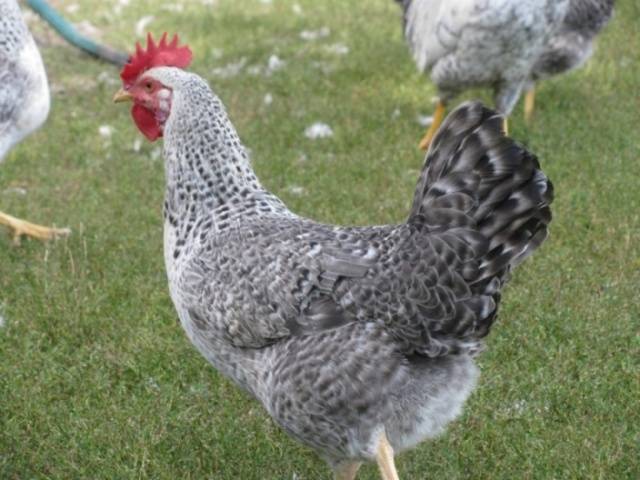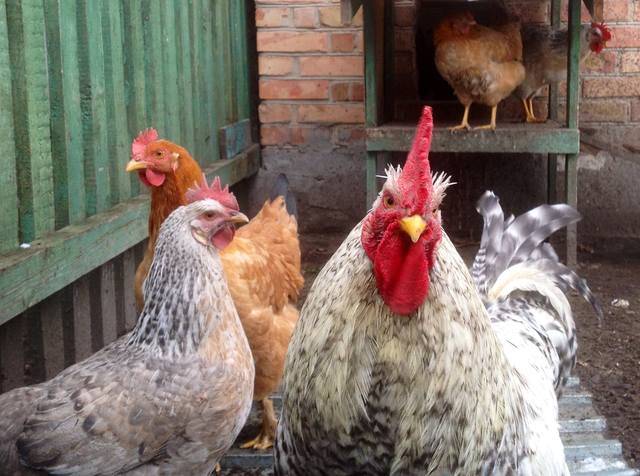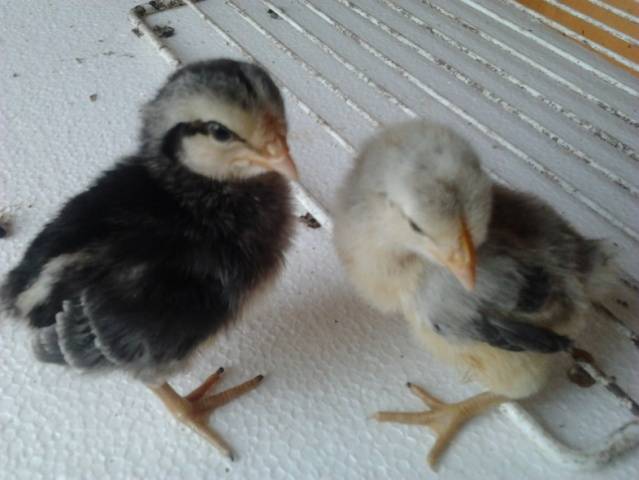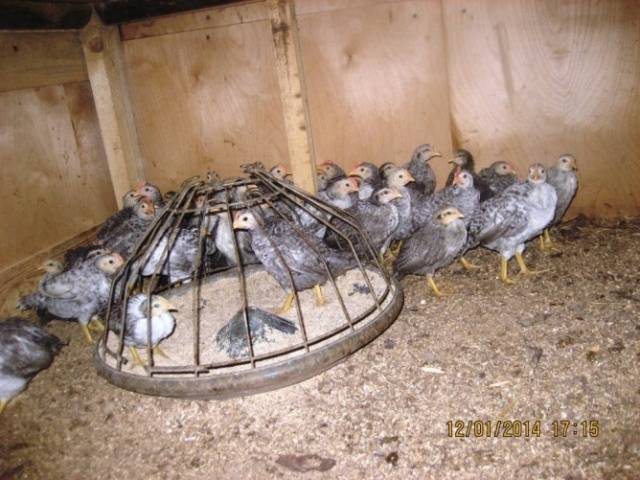Content
In 2005, in one of the villages of Borki, located near Kharkov, breeders from the Poultry Institute of Ukraine bred a new egg breed of chickens. The Borkovskaya Barvistaya breed of chickens in terms of egg production is slightly inferior to industrial crosses, but lays large eggs and allows poultry farmers to breed these birds. Scientists position these chickens as a breed, not a cross. But some chicken breeders cross Borkovsky chickens with Rhode Island chickens to get a meat hybrid.
What kind of breed
So far this is a rather rare and little-known breed, but, according to reviews from the lucky ones, Borkovsky Barvy chickens have high survival rate and good egg production. They were bred through complex crossings of colored and white Leghorns, so high egg production is not surprising. But information about the peaceful nature of this breed varies greatly. Some owners confirm this data, others say that roosters are very pugnacious. Up to and including killing an opponent and attacking the owner. The problem here may lie in the fact that this breed is very young and selection for goodness has not yet been completed. Aggressive roosters are quickly sent to the soup, so pugnacity will clearly be eliminated soon.
Chickens are really very calm. They trust the owner, not trying to run away from them.
In Borki they also breed egg-meat Poltava clay and meat-egg Hercules. In Borki itself this chicken is referred to as the Borki colored breed of chickens. From one of the variants of the Ukrainian name for paint - “barva”. Considering the origin of the breed from Leghorns, the Borkovskaya station can also classify the Borkovsky Barnwine Hens as silver Leghorns.
Standard
General appearance: medium-sized chicken with light bones. The weight of a rooster does not exceed 2.7 kg, a chicken – 2.1 kg. The head is medium-sized, with a yellow beak. The eyes are orange. The comb is bright red, leaf-shaped. The ridge has 6-8 long, well-defined teeth. The comb is large even in chickens, but the teeth on them are much shorter than on roosters.
The neck is long and thin. Body with thin bones, elongated shape. The back and lower back are flat. The tail is long and bushy, set high, but not vertical. The braids on rooster tails are long. Roosters have dark rings on their tail feathers. The roosters' chest is well muscled and protrudes forward. The stomach is tucked. Chickens have a well-developed and full belly.
The wings are small, tightly pressed to the body. Against a motley background, the border between the body and the wing is invisible. Legs of medium length. Metatarsus unfeathered, yellow.
They try to breed the cuckoo color, which makes it possible to distinguish a cockerel from a hen while still being a chick. Chickens are often darker in color. But the color becomes lighter at the bottom and the belly of Borkovsky breed chickens can be white.
A white belly is not a prerequisite for belonging to the Borkovsky barvis. It is always lighter in color relative to the back, but can also be light red. In the photo below there is a laying hen of the Borkov barvy breed of chickens in company with a rooster.
Vices
The presence of a continuous collar on the neck indicates that the Barvistys are not purebred. Roosters are rejected from breeding if they have small combs and earrings. This feature automatically sends a rooster of the egg-laying breed to fattening before slaughter. These signs indicate that the male will not be able to efficiently fertilize laying hens.
Productive characteristics
The description of Barkovsky barvy chickens states that the birds are light in weight, but they have tasty and tender meat. By 2 months, the young animals gain weight of 1.1-1.2 kg. Pullets begin to lay eggs at the age of 4 months. The egg production of these hens is 255-265 eggs per year of laying. Peak egg production occurs at the 29th week of life. At the age of 7 months, pullets lay eggs weighing 52-53 g, at one year of age - 58-59 g.
Reviews from owners of the Borkovsky barvy breed of chickens disagree with the station’s data. Owners claim that these chickens lay eggs weighing 65 grams or larger. At the beginning of egg laying, the weight can be 57-59 g.
The eggs are light cream or light brown in color and have a taste similar to that of homemade eggs. The egg characteristics of Borkovsky chickens are so good that private owners are replacing their livestock with Borkovsky colored ones.
Advantages and disadvantages of the breed
From the description of the Borkovsky barvy breed of chickens on the website of the breeding station, it follows that there are two very serious advantages of this breed: autosexness and high hatchability and survival rate of chickens.
Day-old cockerels have a light gray color and a white spot on the head.The hens are dark gray in color. On the back there are stripes darker than the main color and a small white spot on the head.
In the Borkovsky barvy breed of chickens, you can see white spots in the photo. But the light down of the cockerels and the dark down of the hens can be clearly seen.
But in this case, this is a photograph of a private owner who has no reason to deceive anyone. Chicks only from the incubator.
And older chickens, whose sex is also clearly distinguishable. The hen is dark, the cockerel is light.
Breeding chickens in an incubator allows you to get 92% of the total number of eggs laid. Of the young, 94-95% survive up to 2 months. Safety of adult birds is 93-95%. From the point of view of small private business, the breed turned out to be very profitable.
All from the same description of the Barvista breed of chickens from the breeding station it follows that in addition to good breeding characteristics, the birds have good adaptability to various living conditions and frost resistance. Chickens have a well-developed maternal instinct.
The disadvantage is the smaller number of eggs compared to industrial egg crosses and the aggressiveness of the roosters.
Content
These birds do not require special housing conditions. But even from the description of the Borkovsky breed of chickens it is clear that this bird loves to fly. You will either have to come to terms with this fact and plan for “shrinkage-shrinkage” in advance to account for chickens that are lost or caught by someone, or you will need to build an enclosure closed at the top for walking.
But in the chicken coop you can save space by arranging perches not only at a height of 0.7-0.8 m, but also much higher. In the case of Barvisty, perches can be made in several tiers.These chickens, flying down from a high perch, will not harm themselves.
It is necessary to insulate the chicken coop for the winter only if there is severe frost in the region. However, now it is no longer possible to say for sure where the frosts will be severe and where not. The main requirement is the absence of drafts. Otherwise, the maintenance is no different from other breeds of chickens.
It's good if it's on the floor deep litter. Also in the chicken coop you need to put baths with ash and sand for bathing chickens.
If the Borkovskaya barvista is provided with sufficient daylight, eggs can be obtained from it even in winter. But daylight hours in winter should be 12-14 hours.
Feeding Barvisyh is also no different from other breeds. They also need cereal grains, legumes, greens, vegetables, mineral supplements and vitamins. It has been noticed that Barvists are prone to obesity if there is a large percentage of corn in the feed.
Chickens love to scatter food with their feet. A small chicken will manage to do this even in the feeder, beloved by many chicken keepers, made from a large-diameter plastic pipe. Therefore, it is better to install a feeder in the chicken coop, into which the chickens can stick their heads, but will not go completely.
This is a good option for already adult laying hens, but for such small chickens as young barvisa, you need a separate feeder made for their size.
Reviews
Conclusion
Borkov barvy chickens today are increasingly taking the place of laying hens on private farmsteads instead of industrial egg-laying crosses, which often require special feed and housing conditions for high productivity.



















What if you cross ordinary outbred chickens with a barvy rooster? Does the egg production of young animals improve and is the brooding instinct preserved?
Interesting question.Moreover, the “second half” is an outbred stock of unknown origin and genotype. Unfortunately, genetics is not straightforward. You cannot add 100 eggs from a mongrel hen, add 220 from a barvy hen, divide everything by 2 and end up with 160 eggs laid by a mestizo.
The number of eggs and the size of the mixed hen depends on a very large number of alleles. Often genes are linked to each other. Therefore, the number of eggs may remain at the same level, or it may increase. We can only say with confidence that it is unlikely to be the same as that of purebred Borkov chickens.
As for the brooding instinct, it directly depends on egg production. When breeding egg-laying breeds and crosses, no one specifically removes this instinct. But if a hen lays 300 eggs a year and every day she is “bursting” with a new egg from the inside, she simply has no time to sit on eggs.
At the same time, a chicken sits on eggs, having laid 20-30 eggs (usually even less) and sits on them for a month, and then raises chickens for another month. She has no time to lay eggs, so egg productivity is very low. By the way, even if you take away the eggs, the hen will still “sit.” Even in an empty nest.
In your case, you need to decide what you need: eggs or incubation. With a high degree of probability, the first generation crossbreeds will have rather low egg production, but will have a brooding instinct.
If you need chickens or crossbreeds, you can try to breed them “inside” and see what kind of splitting happens in the second or third generations. If eggs are required, backcrossing with a purebred Borkovsky barvy rooster can be used for 2-3 years.
Backcrossing is not the same as "inbreeding". This means that the crossbreed is again crossed with the desired breed.In this way, the percentage of pedigree increases, and even if the initial flock of chickens is outbred, after a few years the crossbreeds can no longer be distinguished from purebred individuals. Unless with the help of genetic analysis. And, of course, it is better to use different roosters so that inbreeding does not occur.